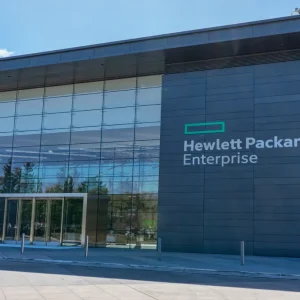
Severalnines has launched a new upgraded version of its database clusters solution, ClusterControl. The new solution will address IT departments’ management issues with multiple databases, saving time as they manually operate deployment, replication and backup of data from one system to the next.
Adding PostgreSQL coverage to the solution has enabled IT operators to manage the three most popular open source databases – MySQL, MongoDB and PostgreSQL – from one ClusterControl platform. The upgrade also boosts increased monitoring capabilities and encryption between MySQL and MariaDB to protect costumers from losing sensitive data.
Following on from this announcement, CBR sat down with Severalnines CEO Vinay Joosery to talk unified database management.
JL : Severalnines has been around for ten years. Could you give our readers an insight into the company?
VJ: Severalnines does automation and management software for database clusters, especially when it comes to clustering and high visibility. The team comes from MySQL AB originally. We have got ten years working with databases, high visibility, replications, and multi-data centre set up.
What happened after MySQL was bought was that we left the company and then saw a gap in the market. People were deploying things across multiple clouds, but they needed to architect for failure and there was not a lot of software out there to help them do that. This is one of the main things we are trying to achieve, and that’s what we have been able to do with our software: to help companies plan for failure of their databases.
We have 7,000 users already including costumers like BT, Orange UK, Cisco and Eurovision (EBU). Without having a sales team we have a lot of very well known brand names and this is what I see: that there is a real need in the market to actually give people higher visibility data management software. The number of customers using us is validating it.
JL : Like you mentioned, you have big names in your customer base. How can Severalnines help companies like Cisco for instance?
VJ: Cisco has a lot of open stack deployment internally across multiple data centres, and they have applications and others running on that sort of private cloud infrastructure. The whole database piece is deployed and managed using our software for database management within Open Stack.
JL : The ClusterControl platform is the Severalnines flagship product. How do you plan to build on, and enhance, the platform?
VJ: There is a lot of database management technology. We know that when it comes to open source, as there’s been almost an explosion of data management software. We have MySQL, we have a fork called MariaDB, MongoDB, Cassandra, Hbase (the database in Hadoop), there is Couchbase – there are probably 50 to 100 companies in the market. So there is a lot of database technology out there but there are not that many tools around the databases, that is a weakness.
We had already built this online technology but we are building tools for management software to help people deploy databases and manage them. Either deploying across people’s own data centre, a private cloud, public cloud deployments or a mixture of those and then managing them, seeing if anything is going wrong, if it needs to be fixed or upgraded, if a node fails and needs to be restarted or rebuild. We can also detect it and automatically fix this.
We support the world’s three most popular open source databases and also offer custumers the latest version to make sure it fits well within the enterprise ecosystem and integrates with other monitoring technologies deployment automation technologies.
JL : The latest version of the platform features PostreSQL. What will PostgreSQL bring to the Clustercontrol?
VJ: MySQL is the number one open source database. PostreSQL has also always been a very popular one and the reason for that is that it is an advanced database.
Typically, people would use PostgreSQL when they are migrating away from Oracle, because PostgreSQL is very close to Oracle. Secondly, there are features in this database that are pretty advanced and interesting for users, as a result, there is a number of people that if they don’t use MySQL, they will use PostgreSQL. It’s really to serve those custumers that we have added support for PostgreSQL. For us, this completes the top three databases list.
JL : The new version also features DevOps and monitoring integration, said to reduce headaches for businesses. How will DevOps and monitoring integration actually help businesses?
VJ: Another great example is Ping Identity. For example, AVG is a large antivirus company, who has a lot of security software out there. They have several services and more than 160 million users on the online platforms and all this user data is in databases. AVG is based across data centres, and they need something to automatically deploy, balance and manage all these instances that are containing data for millions of users.
With all the integration we have in the product we make it easy for AVG to automatically spin up database clusters when they need them, and also to scale them because there will be more users accessing the system and there is a need to scale things fast. Also, when we talk about systems of that scale, with 160 million subscribers, if something goes wrong it needs to be fixed automatically, companies can’t wait for somebody to go in and fix the VM and look at what has happened.
If a database has failed we would automatically detect that and automatically fix these things for these operation teams. Ping Identity, for example, they have databases off spread, across two different internal data centres and one other region across the US: one is in Colorado, the other in Boston and the third in Oregon. If they lose a centre they can have users access the other data centres.
These are things that are pretty complex to set up and complex to manage and also complex to troubleshoot. If there is a performance problem how do you start looking at where it’s coming from? In this particular case, they will have their nodes across three different sites in the USA. These are the kind of things that we give visibility into.
As an example, they were using our software when a hurricane hit the East Coast. Their users didn’t notice anything, because their users could actually use one of the other data centres even though they lost an entire infrastructure.
I don’t think we can say the same for many companies as they look at their IT systems. Many enterprises didn’t have this type of redundancy inbuilt, but Ping Identity has that, and even though there was a disaster hitting the East Coast of the US their users didn’t notice anything.
JL : The updated ClusterControl became available a week ago. What has been the feedback and acceptance from costumers?
VJ: The feedback is good. For example, PostgreSQL was something taken positively by a number of our users. Actually, there were a number of users that requested it in the first place.
Having one tool to manage multiple types of databases simplifies things, so there’s no need to have management tools for every single database costumers use. It’s more simple to manage an open source databases using our product.
The additional encryption features, where we can encrypt replication traffic between data centres, are all addressing another concern companies have around privacy. When data leaves the data centre to be replicated to another data centre costumers don’t want to have eavesdropping while en route.
JL : You have just mentioned encryption and its security aspects. Can you expand more on that?
VJ: We used to have databases locked into a corporate data centre and users would protect it by locking access to it. The problem today is: if someone wants to use the cloud and use multiple data centres for availability, it means spreading data across multiple locations, having to replicate databases across different links.
Obviously when data is all over the place there is the need to have strong controls on that data. At the same time, users need to make sure they are protecting access to that data and also protecting access to the traffic, to the actual data that is being replicated.
We made sure that we encrypt all the communications between different data centres so that there is no unauthorised access to the data, because people wouldn’t be able to figure out what it is and that’s kind of addressing some of these privacy issues. People are distributing databases in different data centres, operations need to have full control on who is accessing what.
JL : Virtualisation is an area of data storage that has been widely welcomed across data centres in the last few years. From speed to safety, the features are vast. What views do you have on virtualisation?
VJ: Virtualisation is great, it is very popular. Obviously the whole cloud thing builds into that. There are some things that don’t work extremely well when it comes to databases, for example databases are typically disk intensive and I/O intensive.
From that point of view, they will need to build their systems in a more distributed way so that each unit is not as large than the one built with multiple type of units. Basically you have the concept of a caple: a caple means today people build systems where they have many many small units that make up into a big system.
Ten years ago or more costumers would build systems running on very large hardware, like a big Oracle database running on a 32 CPU system. Owners would need to have a lot of people to actually manage that. Whereas today, we have 20-30 smaller VMs across multiple data centres. It is a new type of software that needs to understand this reality, and we built our product to understand this new reality.
JL : What does the future have in store for Severalnines?
VJ: Today we have support for MySQL, MongoDB and PostgreSQL. These three are very well known, popular databases and the next thing is to look for another popular open source database. Obviously we are trying to understand which one it will be.
We look forward to adding to the existing mix of databases that we already support, to actually have even more to help large companies manage their open source databases.
Enterprises already have investments into a number of tools to run their infrastructure and what’s happening today is people are building new services using open source, and that’s kind of the future of the enterprise. They are looking at how to leverage open source, inter cloud, to actually build their businesses more efficiently. We are basically adapting to manage in that new environment.






